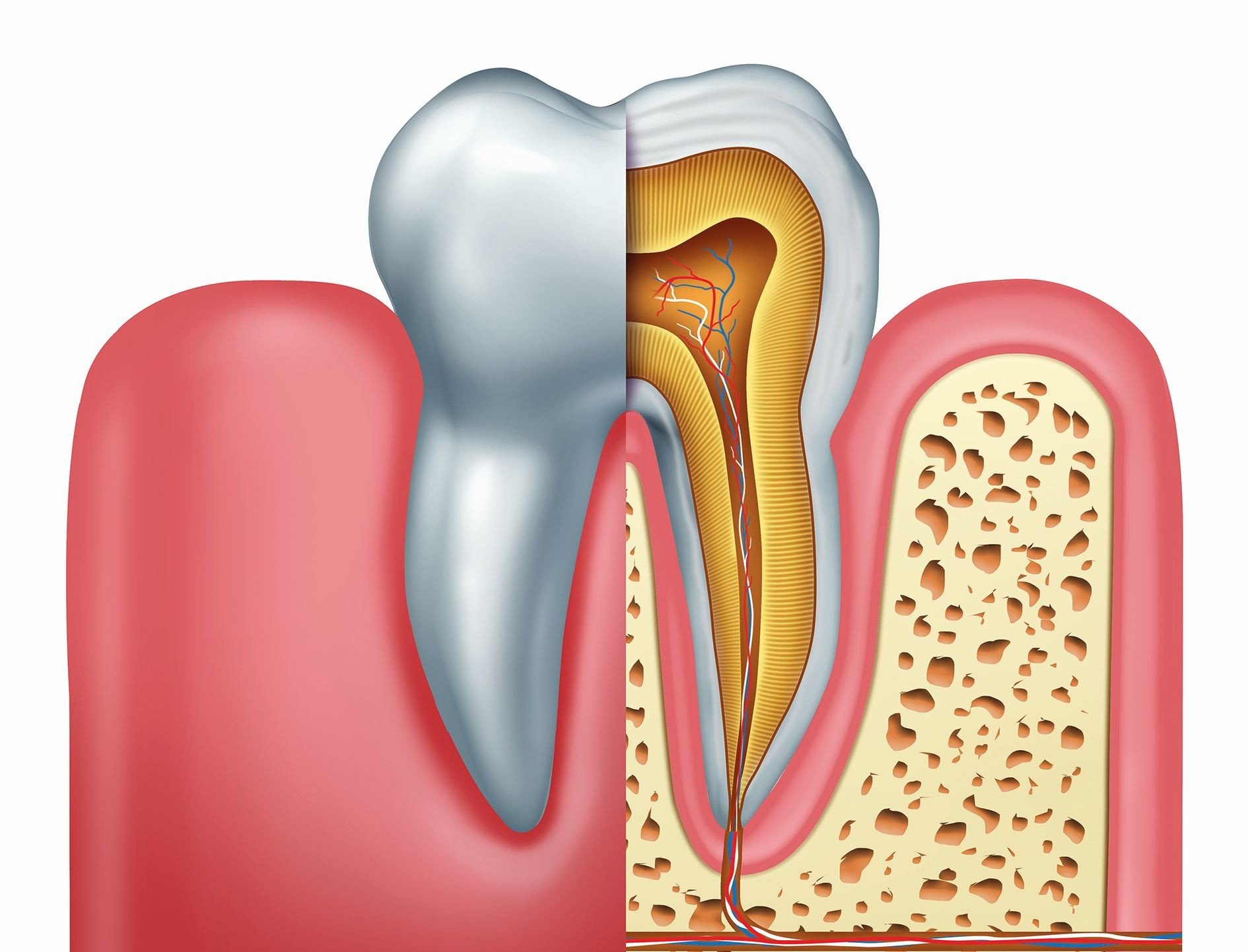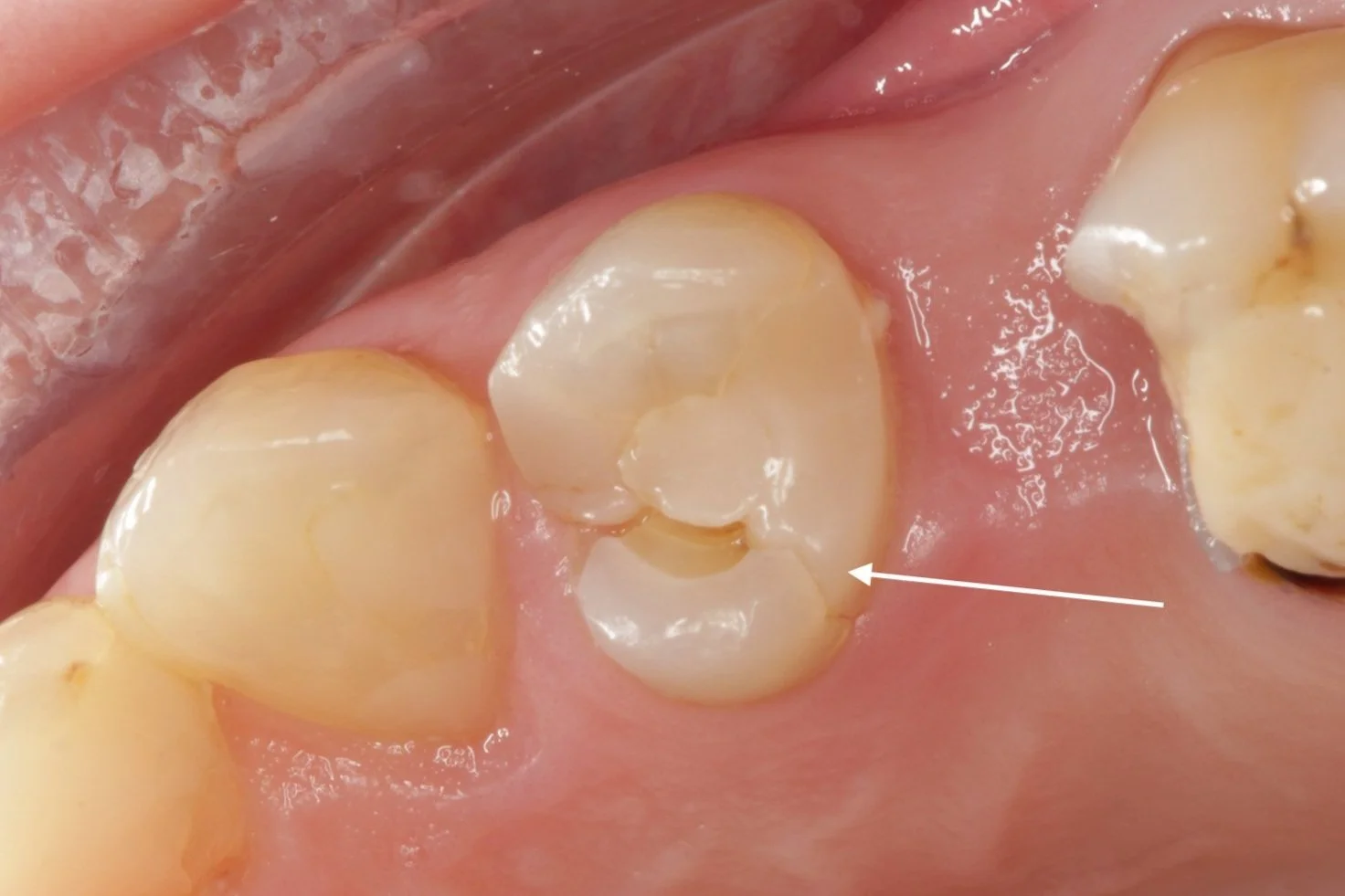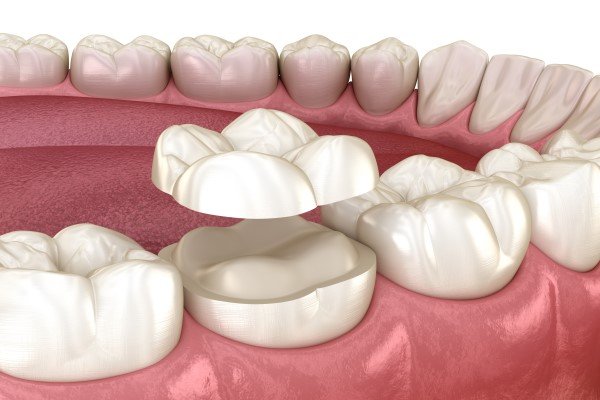Why teeth with root canal fillings need onlays or crowns
*This post refers to your back teeth (premolars and molars), as they are used heavily when you chew. Front teeth may not always need crowns after root canal fillings
During a root canal treatment, your dentist will remove the pulp inside your tooth, which contains the tooth’s nerve and blood supply. This is needed when the pulp becomes infected due to decay or trauma.
Once the infected tissue has been removed, your dentist will then fill the space with a filling material to seal the tooth and prevent it from becoming infected again.
After the root canal filling is completed, your tooth will be healthy and infection-free, but left in a situation where it is much weaker. This is because:
The pulp that used to be in the tooth was soft and acted as a shock absorber, this has now been replaced with a more rigid filling.
Root-filled teeth have had large cavities leaving the walls of the teeth thin and weak.
Root-filled teeth are more brittle.
As you chew and grind on your tooth, due to the reasons above there is a chance that the tooth can crack in half. Once a tooth has split, it can not be saved and will require extraction.
A root-filled tooth left without a crown that has now cracked in half
In order to protect a root-filled tooth, your dentist will advise you to have a crown or an onlay to restore it.
What is a dental crown?
A dental crown is a restoration, usually made of porcelain, that wraps around your tooth like a helmet. It requires drilling down your tooth into a ‘peg’, taking a scan or impression of the peg and then fitting the crown two weeks after it has been made in the lab.
A dental crown is held in place with cement.
Crowns help protect your teeth from breaking in half, can help rebuild broken and lost tooth structure and improve the appearance of your teeth.
Crowns are not elective cosmetic procedures. They are invasive and are only prescribed when it is the best option for the tooth (ie. when the tooth has had a root canal filling).
You can read more about crowns here.
What is a dental onlay?
A dental onlay works similarly to crowns but is much less destructive.
Unlike crowns held in place with cement, onlays are bonded directly to your teeth using resin (basically a powerful glue). Because of this, your dentist doesn’t need to shave your teeth down to a peg; they need to create space on the top part of your tooth. (See the diagram below).
With recent advances in dental technology and bonding resins, onlays have become a more appropriate restoration compared to crowns, as they require much less drilling of your tooth structure.
You can read more onlays here.
Onlays and crowns work the same way to protect your teeth from breaking and cracking in half.
How do crowns and onlays protect my tooth?
If your tooth has a large cavity which has been replaced by a filling, quite often, the walls of your teeth end up becoming very thin. Every time you bite, chew or grind your teeth, you will put pressure on these thin walls and eventually, the tooth can crack.
Cracks around the edges of big fillings
By covering over your entire biting surface, an onlay or a crown will protect your tooth by preventing the walls of your teeth from flexing outwards and binding them together
How long after my root canal should I have a crown / onlay made?
The risk of your tooth cracking increases from the day your root canal filling is done. We advise that you have your crown / onlay made as soon as your root canal filling has been completed.
What alternatives are there to having an onlay or a crown made?
If you are not ready to have a crown or an onlay made, you have the following options:
Leave the root-filled tooth with a large filling - This will leave the tooth at a high risk of breaking
Asking for a direct composite onlay - This is essentially a large filling that your dentist uses to cover over the biting surface of your teeth.
A direct composite onlay may protect your teeth for the short term, but they are challenging for dentists to make well, and the composite material is nowhere near as strong as the lab-made porcelains used in normal onlays and crowns.
Need some more help?
If you’re still unsure about what you need to do with your tooth, feel free to contact one of our online dentists. We can assess your tooth, help you decide what the ideal options are and let you know how much you should be paying for them!
Frequently asked questions
Onlay vs Crown, which is better?
Both of these restorations will do the same job in terms of protecting your tooth. An onlay, however, is much less invasive than a crown and requires less teeth drilling. Many highly trained dentists will almost exclusively use onlays now since dental bonding agents are incredibly predictable. In short, onlays are usually better for your teeth, but it all depends on the skill level of your dentist and what they are most comfortable with providing. Each tooth can be different, and your dentist will guide you to your best option. If you’re not sure, then you can get advice from us here.
I had a root canal without a crown. Is that a problem?
If you’ve had a root canal filling on one of your back teeth without having a crown placed, then that tooth is at an increased risk of breaking and fracturing. Speak to your dentist about getting a crown or onlay made ASAP.
There are some situations when your tooth doesn’t need a crown (when the access cavity for the root canal was small and the tooth is strong enough as it is) but this is quite rare.




